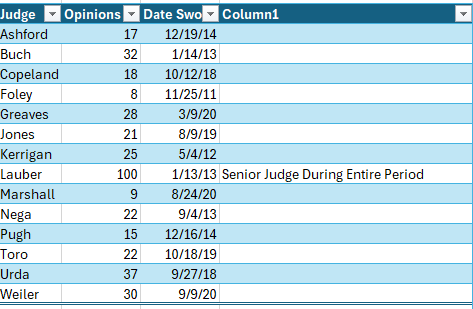In a recent revision to my working draft of the Federal
Tax Procedure Book (with the 2024 version due in early August 2024), I
added to the discussion of the Burden of Production. (The 2023.2 version of the
Practitioner edition, here,
has the Burden of Production discussion starting on p. 617.) As I note there,
the burden of production concept is usually discussed in a jury trial setting
where the party bearing the burden of persuasion will lose on motion for
directed verdict without getting to the jury if there is not enough evidence on
a key fact to be submitted to the jury. That is a production burden or, as some
call it, the risk of nonproduction. This burden is addressed to the function of the judge rather than the jury.
In a recent article, I noted that “The burden of production
could also come into play on a motion for summary judgment, motion for
j.n.o.v., or even on appeal when the trial judge or appellate judges determine
that the evidence was of such quality that a reasonable juror could not make a determination.”
John A. Townsend, Burden of Proof in Tax Cases: Valuation and Ranges—An
Update, 73 Tax Lawyer 389, 402 n. 42 & 404 n. 49 (2020). I decided to
add that thought to the Burden of Production discussion in the working draft of
the Federal Tax Procedure Book so that it will appear in the 2024
edition.
As I now have it in the working draft, the added paragraph
is (footnote omitted):
The burden of
production is discussed above in its traditional jury-trial setting where it
would be invoked in a motion for directed verdict. There is an analog in
motions for summary judgment, motion for judgment notwithstanding verdict
(j.n.o.v.), and appeals. In each of those settings, a proponent may succeed if
the record has unrebutted persuasive evidence that a reasonable jury could not
find for the opponent. In other words, the opponent on a motion for summary
judgment has a burden of production (or risk of nonproduction) equivalent to
show evidence that a reasonable jury could find for the opponent.
I thought I would elaborate in this blog by reference to a
recent tax opinion. In Meyer, Borgman & Johnson, Inc. v. Commissioner,
100 F.4th 986 (8th Cir. 5/6/24), CA8 here and GS here,
the Court affirmed the Tax Court’s grant of summary judgment holding that the
taxpayer did not qualify for § 41’s credit for qualified research expenses”
because the expenses were “funded” by another party (rather than at taxpayer
risk) within the meaning of § 41(d)(4)(H). I will not go further into the law;
the opinion is very short, so I encourage those interested to read it.
Obviously, in granting summary judgment, the Tax Court had
to make findings of fact and conclusions of law. Under my analysis above, the
taxpayer bearing the burden of persuasion and thus the burden of production on
summary judgment had to show that there were sufficient facts under the law to
warrant the Court denying the summary judgment. In other words, in the face of an otherwise appropriate IRS motion for summary judgment, the taxpayer had to ensure that the facts on the motion for summary judgment were of sufficient quality to make the issue a triable issue. In the jury analog, the facts would
have to be sufficient to get the issue to the jury if the facts were as
presented in the motion for summary judgment.
I focus on the Court’s statement in Meyer, Borgman &
Johnson, Inc. of the standard of review on appeal, because it seems to be
less than precise about what it was doing in the context of reviewing the grant
of a motion for summary judgment. I quote the relevant portion of the opinion
(Slip Op. 2, cleaned
up to strip out case citations and quotes to get to the reasoning and bold-face supplied by JAT):
On summary judgment, the Tax Court ruled that MBJ’s research
was “funded” within the meaning of 26 U.S.C. § 41(d)(4)(H), meaning that MBJ
did not qualify for the credits. This
court reviews de novo a grant of summary judgment. Summary Judgment
pursuant to Tax Court Rule 121 is derived from Rule 56 of the Federal Rules of
Civil Procedure and is interpreted consistently with interpretations of Rule
56. Contract interpretation and the propriety of summary judgment are legal
issues we review de novo.
This court reviews de
novo the Tax Court’s legal conclusions; findings of fact are upheld unless
clearly erroneous. An income tax deduction is a matter of legislative grace
and* the burden of clearly showing the right to the claimed deduction is on the
taxpayer.
